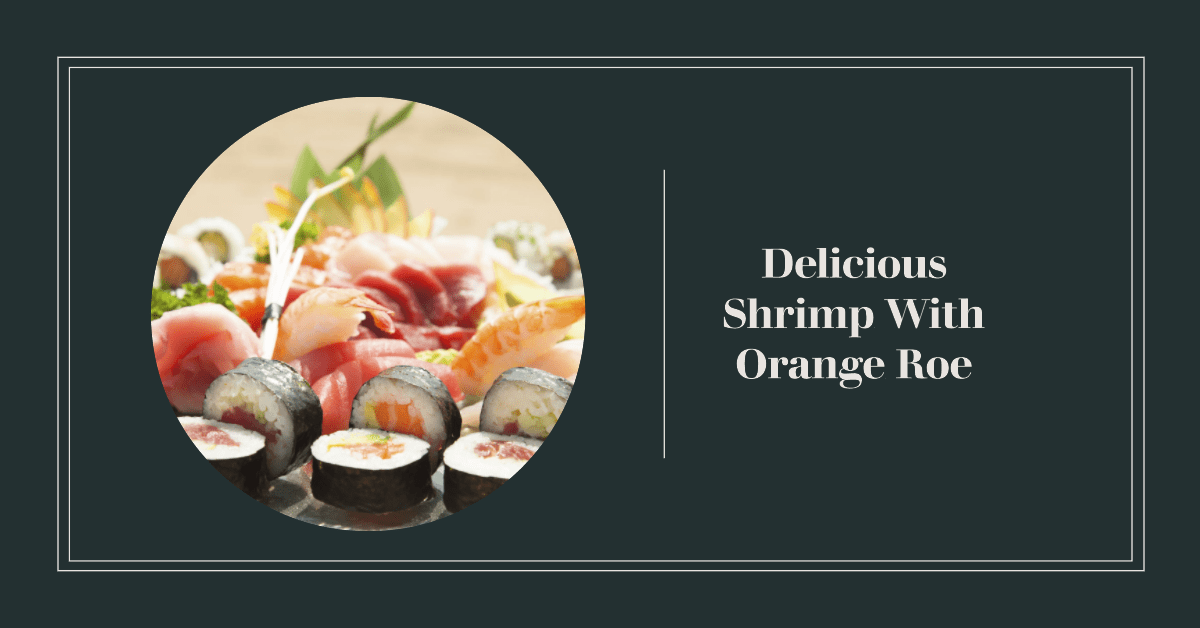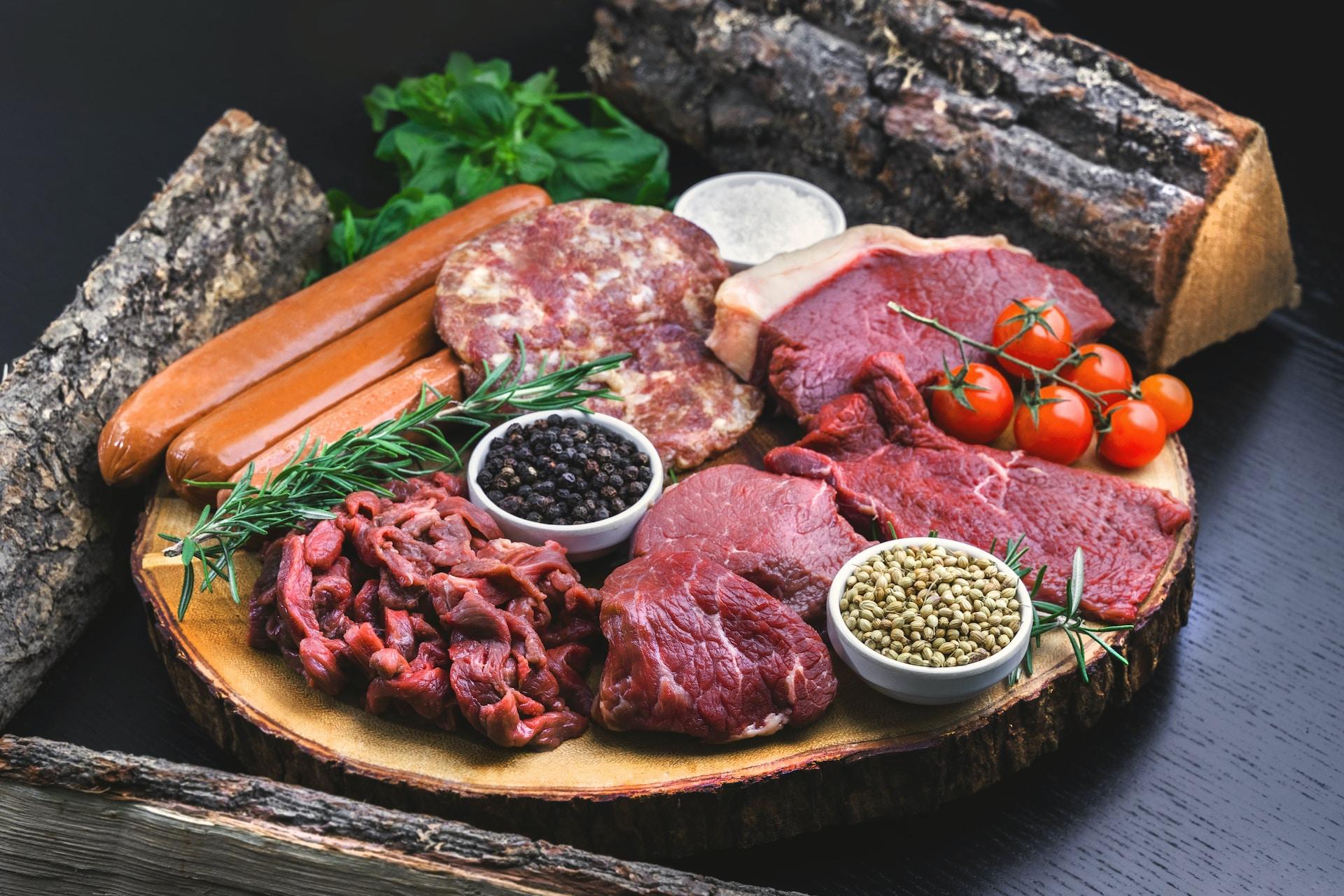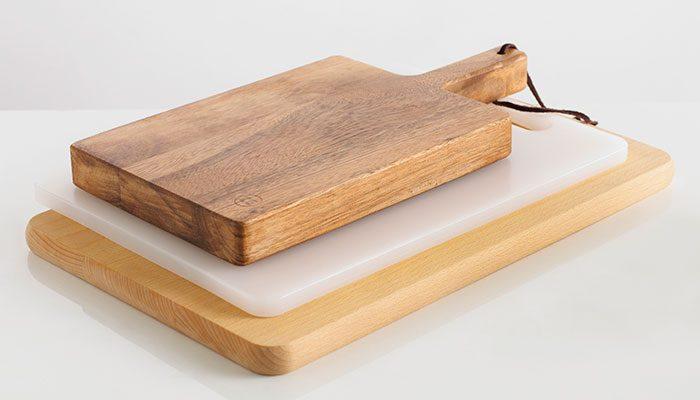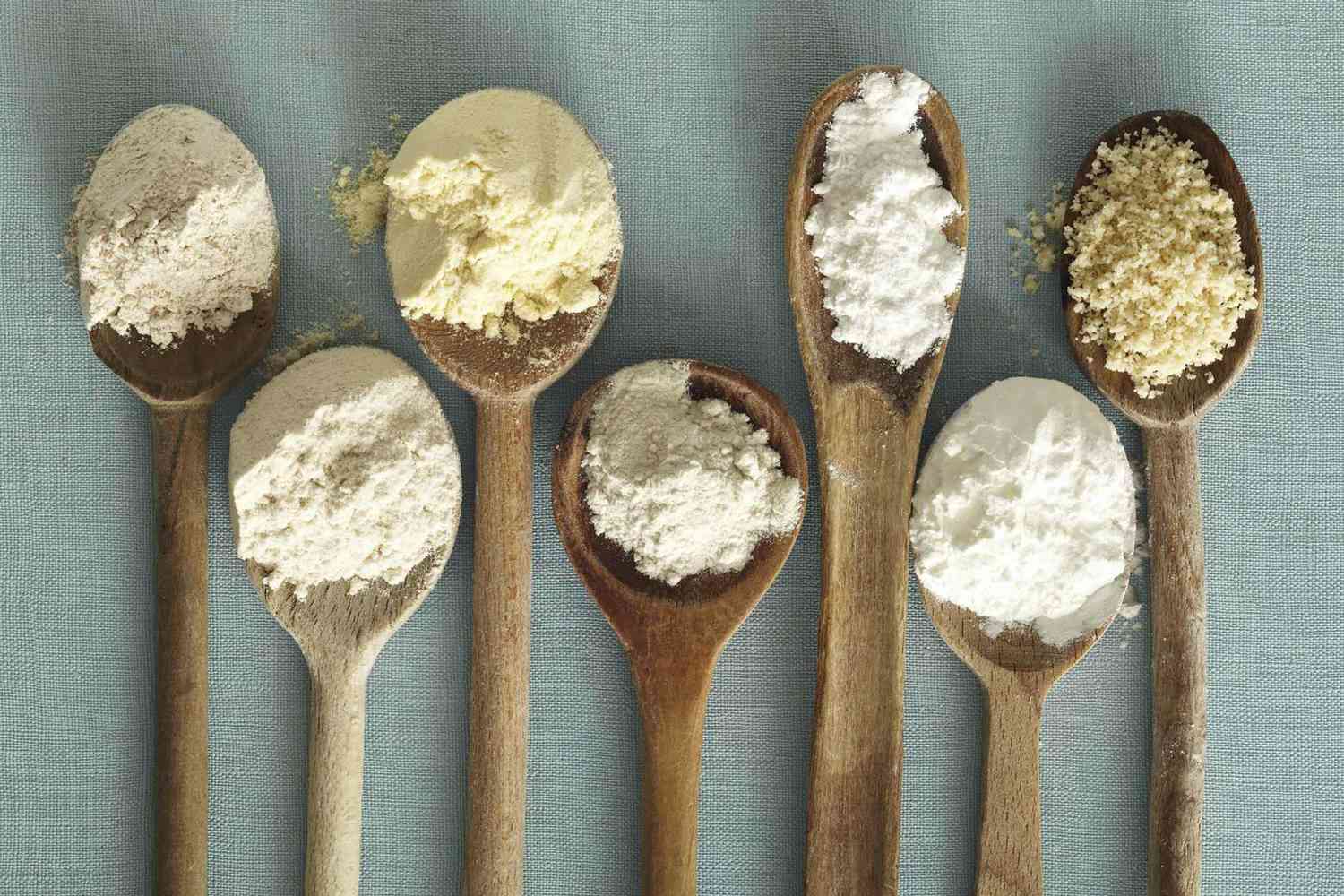Have you ever wondered about that orange stuff in shrimp or prawns? It’s a common occurrence in these crustaceans, and it can be quite perplexing. But fear not, because today we’re going to dive into the mysterious world of prawns’ orange substance.
When you see these vibrant hues in crabs, prawns, and lobsters, you might wonder where they come from and what exactly they are. Well, let me tell you – that orange stuff is actually found in the shrimp’s intestinal tract. Yes, right there in its digestive system! It adds an intriguing characteristic to these delightful crustaceans, making them a popular choice for food.
Understanding the nature of prawns and their sauce can enhance your knowledge of fish and even make you appreciate them more. So next time you spot that black string-like material inside a prawn, don’t be alarmed – embrace it as part of their unique charm!
Now let’s embark on a fascinating journey through the world of orange stuff in prawns and fish and uncover its secrets together. Get ready for an adventure like no other, exploring the shell and eggs!
Contents
What Causes the Orange Substance in Shrimp?
The orange substance found in shrimp, often referred to as “orange gunk,” is primarily caused by a pigment called astaxanthin. This natural pigment is present in certain foods that fish consume as part of their diet. When fish consume these foods, they absorb astaxanthin, leading to its accumulation in their bodies. As a result, the presence of astaxanthin gives fish their distinctive orange color.
Here’s a breakdown of the main points:
-
Astaxanthin: The orange substance in shrimp, primarily attributed to the presence of astaxanthin, enhances the flavor when cooked with garlic sauce. The shell of the shrimp also adds a rich texture to dishes like scrambled eggs.
-
Astaxanthin is a natural pigment found in the shell of shrimp. It is also present in certain foods that shrimps consume, such as orange sauce and garlic.
-
Shrimp absorb astaxanthin through their diet, which causes its accumulation in their bodies. This accumulation of astaxanthin is similar to how eggs absorb orange sauce, resulting in an orange gunk.
-
Distinctive color: The presence of astaxanthin gives shrimp their distinct orange color, whether they are served with sauce or topped with roe.
Is the Orange Substance Safe to Consume and completely safe to eat?
Yes, the orange substance in shrimp sauce is safe for consumption. It is a natural part of the shrimp’s biology and does not pose any health risks. In fact, astaxanthin, the compound responsible for the orange color, has antioxidant properties that offer potential health benefits to humans. Additionally, the roe in shrimp is also safe to eat.
When you come across this orange sauce in shrimp, there’s no need to worry. It’s not some strange chemical or artificial coloring – it’s completely natural. Shrimp contain a pigment called astaxanthin which gives them their vibrant orange hue. This pigment is found in algae and plankton, which are part of the shrimp’s diet and contribute to the production of roe.
Astaxanthin, found in orange gunk, serves as a powerful antioxidant that can help protect cells from damage caused by harmful free radicals. It has been linked to various health benefits such as reducing inflammation, improving heart health, boosting immune function, and even promoting skin health. Additionally, incorporating orange juice into your diet can provide a natural source of astaxanthin.
So when you’re enjoying your delicious plate of shrimp scampi or grilled prawns, that orange substance, known as roe, is actually good for you! Just make sure your shrimp are fresh and properly cooked to avoid any foodborne illnesses.
How Does the Orange Substance Affect the Taste and Quality of Shrimp?
Astaxanthin, found in shrimp roe, plays a crucial role in enhancing both the taste and quality of this delectable seafood. Let’s delve into how this vibrant pigment contributes to a sweeter flavor profile and maintains firmness during cooking.
-
Shrimp Flavor: The presence of astaxanthin significantly influences the overall flavor of shrimp. This natural compound adds a subtle sweetness that tantalizes the taste buds, making cooked shrimp even more enjoyable.
-
Enhanced Taste: When astaxanthin is present in shrimp, it imparts a delightful flavor that elevates the dining experience. The sweet notes brought by this orange substance create an appealing contrast to the savory nature of shrimp meat.
-
Improved Texture: Astaxanthin not only affects taste but also helps maintain firmness and texture when cooking shrimp. As a result, it prevents overcooking or becoming too soft, ensuring each bite offers optimal satisfaction.
-
Quality Perception: The vibrant orange color associated with astaxanthin-rich shrimps often signifies freshness and higher quality to consumers. This visual appeal enhances their perception of the product’s overall desirability.
Understanding the Different Variations of the Orange Substance in Shrimp
The orange substance, also known as roe, found in shrimp can vary significantly among different species. Here are some key points to help you understand the variations of roe in shrimp.
-
Intensity of Orange Coloration: The level of orange color can differ from one species of shrimp to another. Some species exhibit a more vibrant and intense shade of orange, while others may have a lighter hue.
-
Shades of Orange: Certain shrimp species boast deeper shades of orange compared to others. This variation is primarily due to differences in astaxanthin accumulation levels. Astaxanthin is a pigment responsible for the orange coloration in shrimp.
-
Influence of Environmental Factors: Environmental factors, such as water temperature, can also impact the color variations within species. Warmer waters tend to enhance the intensity and richness of the orange hue, while cooler temperatures may result in paler shades.
By familiarizing yourself with these variations, you can easily identify different types of shrimp based on their unique orange characteristics, including roe. Keep in mind that this is just one aspect to consider when distinguishing between various species.
Understanding the diverse range of orange substances, such as roe, found in shrimp allows us to appreciate their natural beauty and diversity. So next time you encounter an orange-hued crustacean, take a moment to observe its distinct shade of roe and consider the factors that contribute to its vibrant appearance.
Remember, cooking shrimp with its shrimp roe offers its own appeal and taste profile, making it an exciting journey for seafood enthusiasts who appreciate the wonders that nature provides!
Proper Handling and Storage of Shrimp with Orange Substance
Freshness is key, especially when you notice shrimp roe, an orange substance, on them. To ensure the best taste and quality, follow these guidelines for proper handling and storage.
-
Check for Freshness: When purchasing shrimp, look for those with a vibrant orange color. This indicates their freshness and ensures a delicious meal.
-
Packaging Matters: Store your shrimp in airtight containers or sealed bags to maintain their freshness. This helps prevent any contamination and keeps them at their best.
-
Keep Refrigerated: To prevent spoilage, refrigerate your shrimp at temperatures below 40°F (4°C). This ensures they stay fresh for longer periods.
-
Consume Within Two Days: For optimal taste and quality, it’s recommended to consume the shrimp within two days of purchase. This timeframe allows you to enjoy the flavors without compromising on freshness.
By following these simple steps, you can ensure that your shrimp remains delicious and free from any concerns related to the orange substance called roe. Enjoy your meal knowing that you’ve taken the necessary precautions for proper handling and storage of roe.
Remember: vibrant orange shrimp roe color indicates freshness, store in airtight containers or sealed bags, refrigerate below 40°F (4°C), consume within two days for optimal taste and quality.
Embracing the Orange Stuff in Shrimp
In conclusion, understanding and embracing the roe, or orange substance, found in shrimp is crucial for all seafood enthusiasts. By recognizing its causes, safety, impact on taste and quality, variations, as well as proper handling and storage techniques, you can fully appreciate this unique aspect of shrimp.
The orange substance in shrimp, also known as roe, is primarily caused by a pigment called astaxanthin. This naturally occurring compound, roe, is safe to consume and even offers health benefits due to its antioxidant properties. It not only enhances the vibrant color of shrimp but also contributes to their flavor profile.
While the orange roe substance may vary in intensity and distribution among different species of shrimp, it does not indicate any compromise in quality or freshness. Instead, it adds visual appeal and character to these delicious crustaceans.
To ensure optimal enjoyment of shrimp with the roe, it is essential to handle and store them properly. This includes keeping them refrigerated at temperatures below 40°F (4°C), avoiding cross-contamination with other foods, and consuming them within a few days of purchase.
In summary, don’t be alarmed by the presence of roe, the orange stuff, in shrimp—embrace it! Recognize that it is a natural occurrence that adds beauty and flavor to these delectable creatures. So go ahead and indulge yourself with some succulent shrimp dishes today!
FAQs
What causes the orange substance in shrimp?
The orange substance found in shrimp, known as roe, is primarily caused by a pigment called astaxanthin. Roe is the mass of eggs found in female shrimp, and it is commonly consumed in many cultures. Astaxanthin is a natural pigment that belongs to a group of chemicals called carotenoids.
It is responsible for giving shrimp its vibrant orange color. This pigment is not only found in shrimp but also in other seafood like lobster and crabs. Astaxanthin acts as a powerful antioxidant and is known for its potential health benefits. It is believed to have anti-inflammatory properties and may help reduce the risk of certain diseases. In addition to its health benefits, astaxanthin is also responsible for the color change that occurs in shrimp when they are cooked.
The orange hue intensifies during heating, making the shrimp even more visually appealing. Overall, astaxanthin plays a crucial role in imparting both visual appeal and potential health benefits to shrimp and other seafood.
Is the orange substance safe to consume?
Yes, consuming shrimp roe is a safe and healthy choice due to its antioxidant properties. Shrimp roe or shrimp eggs are packed with various nutrients that can benefit our overall health.
These tiny eggs contain high levels of astaxanthin, a powerful antioxidant that helps protect our cells from damage caused by free radicals. Astaxanthin has been shown to have numerous health benefits, including reducing inflammation, improving brain function, boosting the immune system, and supporting heart health. Additionally, shrimp roe is rich in omega-3 fatty acids, which are essential for brain health and can help reduce the risk of heart disease.
This nutrient-rich delicacy also provides a good source of protein, vitamins, and minerals. However, it is important to consume shrimp roe in moderation as it is high in cholesterol. Overall, incorporating shrimp roe into a balanced diet can be a safe and beneficial way to enhance our health.
How does the orange substance affect the taste and quality of shrimp?
Roe, the orange substance, has the ability to elevate both the flavor and aesthetic appeal of shrimp without compromising their quality or freshness. The vibrant hue of the roe adds a pop of color to the dish, making it visually enticing and appetizing. It creates a beautiful contrast against the pearly white flesh of the shrimp. Not only does the roe enhance the visual appeal, but it also enhances the taste. Its subtle briny, slightly sweet flavor complements the natural sweetness of the shrimp, creating a harmonious combination of flavors. The addition of roe adds a level of complexity to the dish that takes it to another level. Whether served raw, cooked, or used as a garnish, roe brings a unique element to shrimp dishes. It is a versatile ingredient that can be incorporated in various culinary preparations, showcasing its culinary potential. In conclusion, roe is the perfect addition to shrimp, as it amplifies both the taste and visual appeal without compromising the quality or freshness of the seafood.
Are there different variations of the orange substance in shrimp?
Yes, different species of shrimp can show variations in the intensity and distribution of the orange substance, including roe. The orange substance found in shrimp is typically due to the presence of astaxanthin, a carotenoid pigment. Astaxanthin is responsible for the vibrant orange color seen in cooked shrimp. However, the amount and distribution of astaxanthin can vary among different shrimp species.
Some species may have a higher concentration of astaxanthin, resulting in a more intense orange coloration, while others may have a lower concentration, leading to a lighter shade of orange. Furthermore, the distribution of the orange pigment can differ as well.
Some shrimp species may have a more uniform distribution, with the orange color evenly spread throughout their bodies, while others may exhibit a more patchy or speckled pattern. Additionally, the presence of roe can also contribute to variations in the appearance of shrimp. The roe, or shrimp eggs, can range in color from orange to red, adding another element of diversity to the overall appearance of different species of shrimp.
How should I handle and store shrimp with the orange substance?
To ensure optimal freshness, shrimp with the orange substance, also known as roe, should be refrigerated at temperatures below 40°F (4°C) and consumed within a few days of purchase. Roe is the mass of eggs found inside a female shrimp and can provide a delicate, sweet flavor. However, if not properly stored, it can quickly spoil and compromise the taste and texture of the shrimp.
The refrigeration process helps slow down the growth of bacteria and prevents the roe from becoming unsafe to eat. It is important to keep the shrimp well-packaged in an airtight container or sealed plastic bag to prevent any cross-contamination with other food items. Furthermore, it is recommended to consume the shrimp within a few days to ensure its quality.
By following these guidelines, one can indulge in the fresh, delightful taste of shrimp with roe and make the most out of this unique seafood delicacy.
Q: What is the orange stuff in shrimp?
A:The orange stuff in shrimp is commonly referred to as the vein, but it is actually the shrimp’s digestive tract. Contrary to popular belief, it is not a vein containing blood. The orange color comes from the pigments in the shrimp’s diet, such as algae and plankton.
While some people prefer to remove the vein before cooking, it is safe to eat and does not pose any health concerns. Nonetheless, it is purely a matter of personal preference whether or not to enjoy shrimp with or without the orange “vein.”
Q: Can you eat the orange vein in shrimp?
A: Yes, you can eat the orange vein in shrimp, but many people prefer to remove it before cooking. While it is possible to eat the orange vein in shrimp, many individuals opt to eliminate it before preparing their meal. Personal preferences and cultural customs play a role in this choice, and some find that removing the vein improves the overall taste and texture of the shrimp dish.
Q: How do you remove the vein in shrimp?
A: To remove the vein in shrimp, a shallow cut can be made along the back of the shrimp using a sharp knife or a deveining tool. This simple step ensures that the shrimp is clean and ready to be cooked or served in various delicious dishes. Then, use the tip of the knife or a toothpick to lift and pull out the vein.
Q: Why should you devein shrimp?
A: Deveining shrimp is a matter of personal preference. Some people find that the vein can give a bitter taste to the shrimp, while others are not bothered by it. Deveining also helps to clean the shrimp and remove any potential bacteria.
Q: Is the orange vein in shrimp edible?
A: Yes, the orange vein in shrimp is edible. However, if you find it unappetizing or prefer the taste without the vein, it is best to remove it before cooking.
Q: What is the orange stuff inside the shrimp head?
A: The orange stuff inside the shrimp head is the hepatopancreas, also known as the “shrimp fat.” It is a gland that functions in digestion and nutrient storage.
Q: Can you eat the orange stuff inside the shrimp head?
A: Yes, the orange stuff inside the shrimp head is edible. Some people enjoy eating it, as it is rich in flavor. However, others prefer to remove it before consuming the shrimp.
Q: How do you clean shrimp?
A: To clean shrimp, first remove the head by twisting it off. Then, peel off the shell by starting at the legs and working your way down to the tail. Finally, devein the shrimp by making a shallow cut along the back and removing the vein.
Q: Can you buy fresh shrimp with the vein already removed?
A: Yes, you can buy fresh shrimp with the vein already removed. Many grocery stores and seafood markets offer deveined shrimp to save you the hassle of removing it yourself.
Q: What are some popular ways to cook shrimp?
A: There are numerous ways to cook shrimp, including grilling, sautéing, boiling, and baking. Shrimp can be used in various recipes such as pasta dishes, stir-fries, salads, and even as an appetizer with dipping sauces like sweet and sour sauce.


![Does Ground Beef Taste Good With Alfredo Sauce? [Answered]](https://kitchenbarrels.com/wp-content/uploads/2023/01/Ground-Beef-Taste-Good-With-Alfredo-Sauce-jpg.webp)




